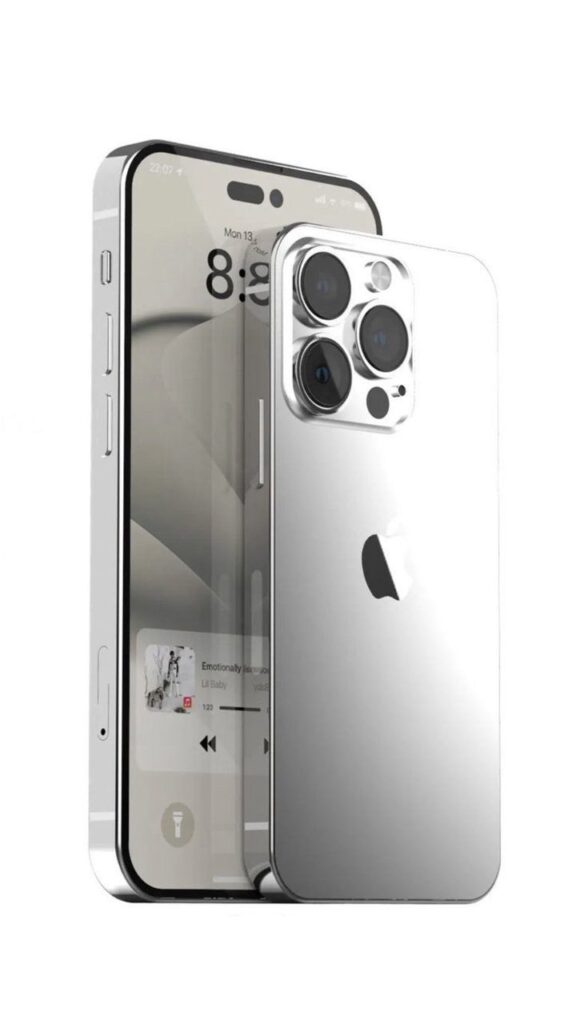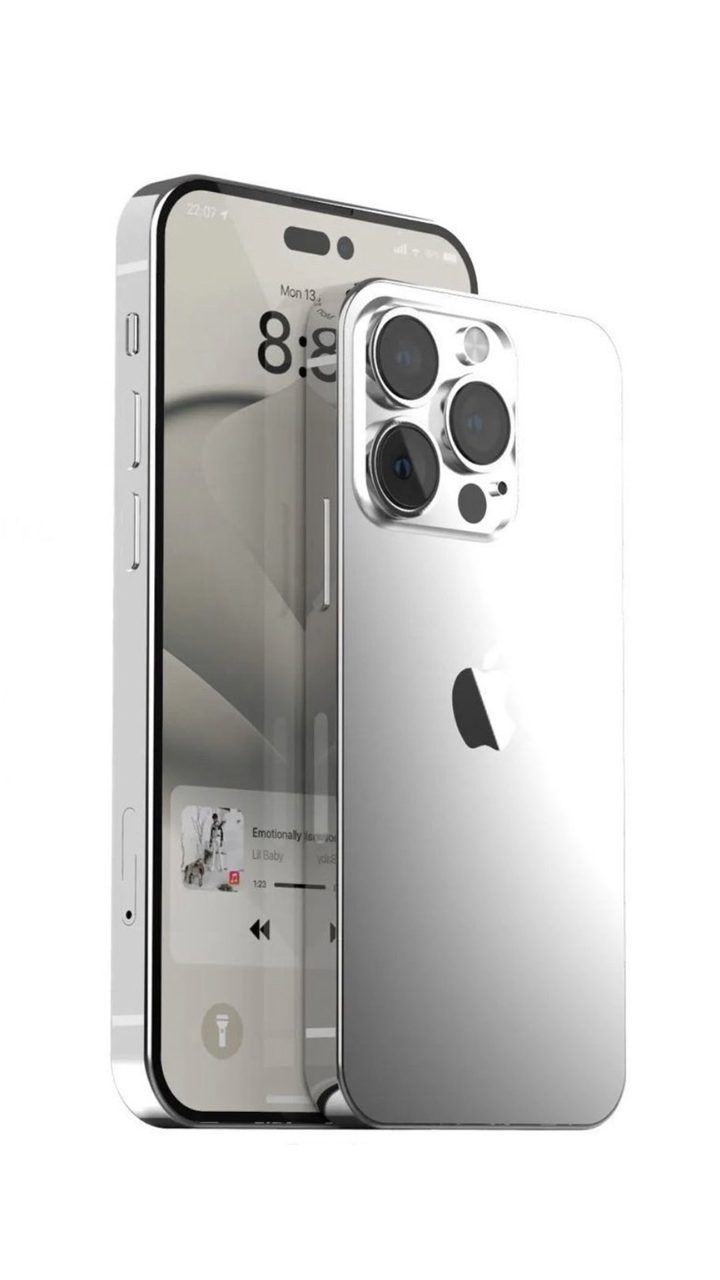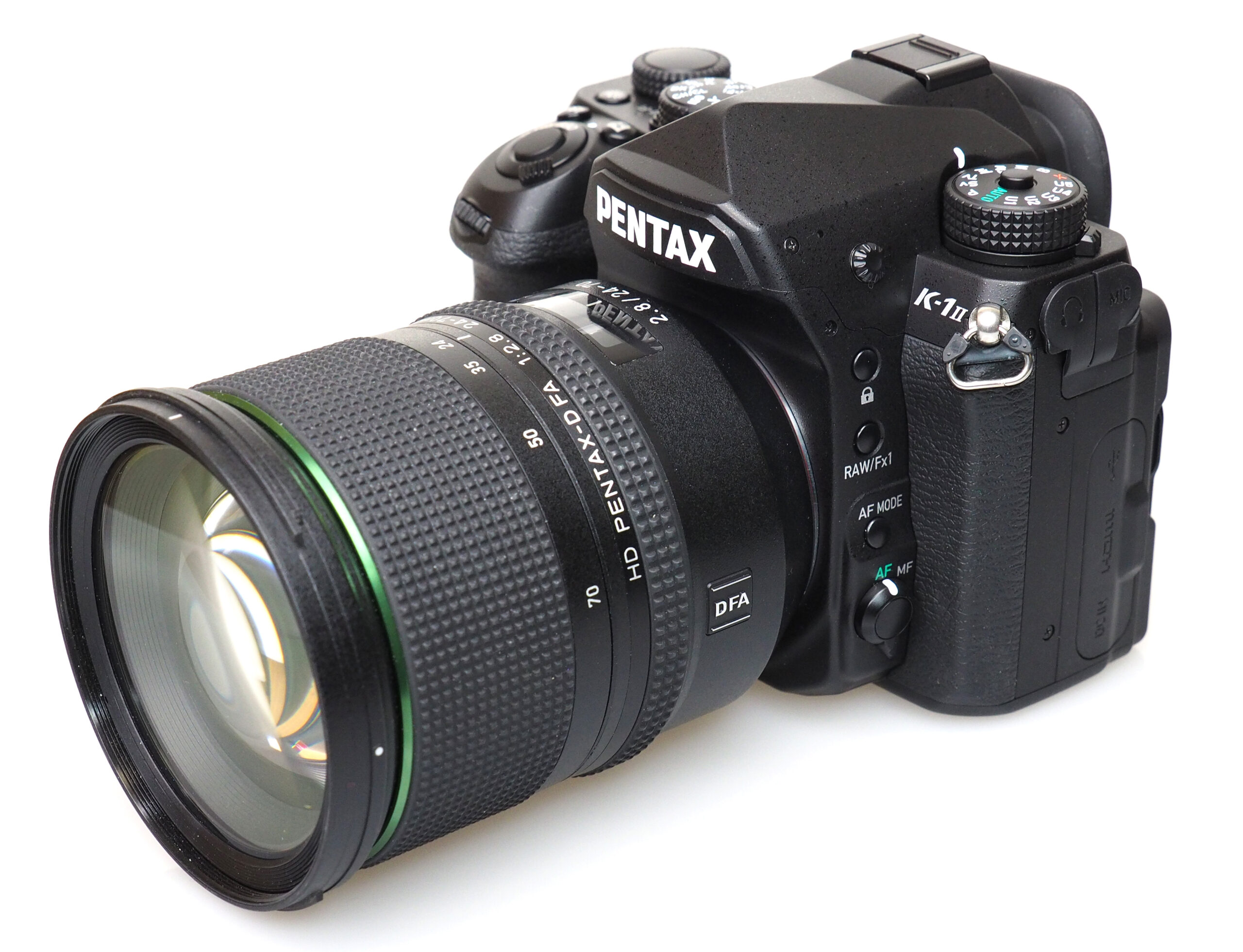The iPhone 15 Pro is the upcoming flagship smartphone from Apple, and it is expected to be a major upgrade over the iPhone 14 Pro. Here is everything we know about the iPhone 15 Pro so far.

Table of Contents
Design
The iPhone 15 pro is expected to have a similar design to the iPhone 14 Pro, with a flat-edged design and a stainless steel frame. However, there are some rumors that the iPhone 15 Pro may have thinner bezels than the iPhone 14 Pro. The iPhone 15 Pro is also rumored to be made from a new titanium alloy, which would make it more durable than the stainless steel used in previous models.

Display
The iPhone 15 pro is expected to have a 6.1-inch OLED display with a resolution of 2532 x 1170 pixels. The display is also rumored to support ProMotion technology, which would allow for a variable refresh rate of up to 120Hz. This would make the display smoother and more responsive, especially when scrolling through webpages or playing games.

Camera
The iPhone 15 pro is expected to have a triple-lens rear camera system, with a 48-megapixel main sensor, a 12-megapixel ultrawide sensor, and a 12-megapixel telephoto sensor. The main sensor is rumored to be larger than the sensor used in the iPhone 14 Pro, which would allow for better low-light performance. The telephoto sensor is also rumored to have a longer focal length, which would make it better for zooming in on distant objects.

Processor
The iPhone 15 Pro is expected to be powered by the A17 Bionic chip, which is Apple’s next-generation mobile processor. The A17 Bionic chip is rumored to be based on TSMC’s 3nm process, which would make it significantly faster and more efficient than the A16 Bionic chip used in the iPhone 14 Pro.

Battery
The iPhone 15 pro is expected to have a larger battery than the iPhone 14 Pro, which would help to improve battery life. The iPhone is also rumored to support faster charging, with support for up to 30W wired charging and 20W wireless charging.

Software
The iPhone 15 pro is expected to run iOS 16, the next version of Apple’s mobile operating system. iOS 16 is rumored to include a number of new features, including a redesigned lock screen, improved notifications, and new productivity features.
Price
The iPhone 15 Pro is expected to start at $999, which is the same price as the iPhone 14 Pro. However, the iPhone 15 pro may be more expensive than the iPhone 14 Pro due to the new titanium alloy used in the chassis.
Release Date of iPhone 15 Pro
The iPhone 15 pro is expected to be released in September 2023.
Conclusion
The iPhone 15 Pro is shaping up to be a major upgrade over the iPhone 14 Pro. The new design, improved camera system, and faster processor are all welcome changes. The iPhone 15 Pro is also expected to have better battery life and support for faster charging. If you’re looking for the best possible iPhone experience, the iPhone 15 pro is the phone to get.
Additional Details
In addition to the information mentioned above, here are some other details that have been rumored about the iPhone 15 Pro:
- The iPhone 15 pro may have an always-on display, which would allow you to see the time and other information without having to wake up the phone.
- The iPhone 15 pro may have a periscope telephoto lens, which would allow for even more powerful zoom capabilities.
- The iPhone 15 pro may have a new action button, which could be used to quickly launch certain features or apps.
These are just a few of the rumored features of the iPhone 15 Pro. It remains to be seen which of these features will actually make it into the final product. However, one thing is for sure: the iPhone 15 Pro is shaping up to be a very exciting phone.

Every Other iPhone Till Now
iPhone 1st generation (2007):
The first iPhone was released on June 29, 2007. It had a 3.5-inch touchscreen display, a 2-megapixel rear camera, and a 1.3-megapixel front-facing camera. It was powered by the Apple A4 chip and ran iOS 1.0.
iPhone 3G (2008):
The iPhone 3G was released on July 11, 2008. It had a similar design to the original iPhone, but it had a faster processor, 3G cellular connectivity, and a built-in GPS receiver. It was powered by the Apple A5 chip and ran iOS 2.0.
iPhone 3GS (2009):
The iPhone 3GS was released on June 19, 2009. It had a faster processor, a better camera, and voice control. It was powered by the Apple A5 chip and ran iOS 3.0.
iPhone 4 (2010):
The iPhone 4 was released on June 24, 2010. It had a new design with a glass front and back and a stainless steel frame. It also had a Retina display, which had a higher resolution than previous iPhones. It was powered by the Apple A4 chip and ran iOS 4.0.
iPhone 4S (2011):
The iPhone 4S was released on October 14, 2011. It had a similar design to the iPhone 4, but it had a faster processor, a better camera, and Siri, Apple’s voice assistant. It was powered by the Apple A5 chip and ran iOS 5.0.
iPhone 5 (2012):
The iPhone 5 was released on September 12, 2012. It had a taller and thinner design than previous iPhones, and it had a new Lightning connector. It also had a Retina display with a higher resolution than the iPhone 4S. It was powered by the Apple A6 chip and ran iOS 6.0.
iPhone 5S (2013):
The iPhone 5S was released on September 20, 2013. It had a similar design to the iPhone 5, but it had a faster processor, a fingerprint sensor, and gold color option. It was powered by the Apple A7 chip and ran iOS 7.0.
iPhone 5C (2013):
The iPhone 5C was released on September 20, 2013. It had a plastic case and came in multiple colors. It had the same features as the iPhone 5S, but it had a slower processor. It was powered by the Apple A6 chip and ran iOS 7.0.
iPhone 6 (2014):
The iPhone 6 was released on September 19, 2014. It had a larger display than previous iPhones, and it had a new curved design. It was powered by the Apple A8 chip and ran iOS 8.0.
iPhone 6 Plus (2014):
The iPhone 6 Plus was released on September 19, 2014. It had the same features as the iPhone 6, but it had a larger display and a longer battery life. It was powered by the Apple A8 chip and ran iOS 8.0.
iPhone 6S (2015):
The iPhone 6S was released on September 25, 2015. It had a similar design to the iPhone 6, but it had a faster processor, a better camera, and 3D Touch. It was powered by the Apple A9 chip and ran iOS 9.0. [Image of iPhone 6S
iPhone 7 (2016):
The iPhone 7 was released on September 16, 2016. It had a similar design to the iPhone 6S, but it had a new water-resistant design and a new home button with haptic feedback. It was powered by the Apple A10 Fusion chip and ran iOS 10.0.
iPhone 7 Plus (2016):
The iPhone 7 Plus was released on September 16, 2016. It had the same features as the iPhone 7, but it had a larger display and a dual-camera system on the back. It was powered by the Apple A10 Fusion chip and ran iOS 10.0
iPhone 8 (2017):
The iPhone 8 was released on September 22, 2017. It had a glass back and wireless charging capabilities. It was powered by the Apple A11 Bionic chip and ran iOS 11.0.
iPhone 8 Plus (2017):
The iPhone 8 Plus was released on September 22, 2017. It had the same features as the iPhone 8, but it had a larger display and a dual-camera system on the back. It was powered by the Apple A11 Bionic chip and ran iOS 11.0.
iPhone X (2017):
The iPhone X was released on November 3, 2017. It had a new design with a bezel-less display and a facial recognition system called Face ID. It was powered by the Apple A11 Bionic chip and ran iOS 11.0
iPhone XS (2018):
The iPhone XS was released on September 21, 2018. It had a similar design to the iPhone X, but it had a faster processor, a better camera, and a gold color option. It was powered by the Apple A12 Bionic chip and ran iOS 12.0
iPhone XS Max (2018):
The iPhone XS Max was released on September 21, 2018. It had the same features as the iPhone XS, but it had a larger display. It was powered by the Apple A12 Bionic chip and ran iOS 12.0..
iPhone XR (2018):
The iPhone XR was released on October 26, 2018. It had a similar design to the iPhone X, but it had a lower-resolution display and a single-lens rear camera. It was powered by the Apple A12 Bionic chip and ran iOS 12.0.
iPhone 11 (2019):
The iPhone 11 was released on September 20, 2019. It had a new design with a dual-camera system on the back and a new Night mode for taking photos in low-light conditions. It was powered by the Apple A13 Bionic chip and ran iOS 13.0.
iPhone 11 Pro (2019):
The iPhone 11 Pro was released on September 20, 2019. It had a similar design to the iPhone 11, but it had a faster processor, a better camera system, and a stainless steel frame. It was powered by the Apple A13 Bionic chip and ran iOS 13.0.
iPhone 11 Pro Max (2019):
The iPhone 11 Pro Max was released on September 20, 2019. It had the same features as the iPhone 11 Pro, but it had a larger display. It was powered by the Apple A13 Bionic chip and ran iOS 13.0.
iPhone 12 (2020):
The iPhone 12 was released on October 23, 2020. It had a new design with flat edges and a Ceramic Shield front cover. It also had 5G cellular connectivity and a new dual-camera system on the back. It was powered by the Apple A14 Bionic chip and ran iOS 14.0.
iPhone 12 mini (2020):
The iPhone 12 mini was released on October 23, 2020. It had a similar design to the iPhone 12, but it had a smaller display and a lower price tag. It was powered by the Apple A14 Bionic chip and ran iOS 14.0.
iPhone 12 Pro (2020):
The iPhone 12 Pro was released on October 23, 2020. It had a similar design to the iPhone 12, but it had a stainless steel frame, a triple-lens rear camera system, and LiDAR Scanner. It was powered by the Apple A14 Bionic chip and ran iOS 14.0.
iPhone 12 Pro Max (2020):
The iPhone 12 Pro Max was released on October 23, 2020. It had the same features as the iPhone 12 Pro, but it had a larger display and a longer battery life. It was powered by the Apple A14 Bionic chip and ran iOS 14.0.
iPhone 13 (2021):
The iPhone 13 was released on September 14, 2021. It had a similar design to the iPhone 12, but it had a faster processor, a better camera system, and a longer battery life. It was powered by the Apple A15 Bionic chip and ran iOS 15.0.
iPhone 13 mini (2021):
The iPhone 13 mini was released on September 14, 2021. It had a similar design to the iPhone 13, but it had a smaller display and a lower price tag. It was powered by the Apple A15 Bionic chip and ran iOS 15.0.
iPhone 13 Pro (2021):
The iPhone 13 Pro was released on September 14, 2021. It had a similar design to the iPhone 13, but it had a stainless steel frame, a triple-lens rear camera system with improved sensors, and ProMotion display with a variable refresh rate of up to 120Hz. It was powered by the Apple A15 Bionic chip and ran iOS 15.0.
iPhone 13 Pro Max (2021):
The iPhone 13 Pro Max was released on September 14, 2021. It had the same features as the iPhone 13 Pro, but it had a larger display and a longer battery life. It was powered by the Apple A15 Bionic chip and ran iOS 15.0
iPhone 14:
The iPhone 14 is expected to have a 6.1-inch OLED display with a resolution of 2532 x 1170 pixels. It is rumored to have a new A16 Bionic chip and a better camera system than the iPhone 13. It is also rumored to have a new design with a pill-shaped cutout for the front-facing camera and a hole-punch cutout for the Face ID sensor
iPhone 14 plus:
The iPhone 14 Max is expected to have a 6.7-inch OLED display with a resolution of 2778 x 1284 pixels. It is rumored to have the same A16 Bionic chip and camera system as the iPhone 14. It is also rumored to have a similar design to the iPhone 14.
iPhone 14 Pro:
The iPhone 14 Pro is expected to have a 6.1-inch OLED display with a resolution of 2532 x 1170 pixels. It is rumored to have a new A16 Bionic chip, a triple-lens rear camera system with improved sensors, and ProMotion display with a variable refresh rate of up to 120Hz. It is also rumored to have a new design with a pill-shaped cutout for the front-facing camera and a hole-punch cutout for the Face ID sensor.
iPhone 14 Pro Max:
The iPhone 14 Pro Max is expected to have a 6.7-inch OLED display with a resolution of 2778 x 1284 pixels. It is rumored to have the same A16 Bionic chip, triple-lens rear camera system, and ProMotion display as the iPhone 14 Pro. It is also rumored to have a similar design to the iPhone 14 Pro.
End Of The Post
We Will Share Every New News of iPhone 15, iPhone 15 Plus, iPhone 15 pro , iPhone 15 pro max.
Check Our Website Daily!! For Tech news.
Thank You Visit Again!! SUNVOAM.COM










